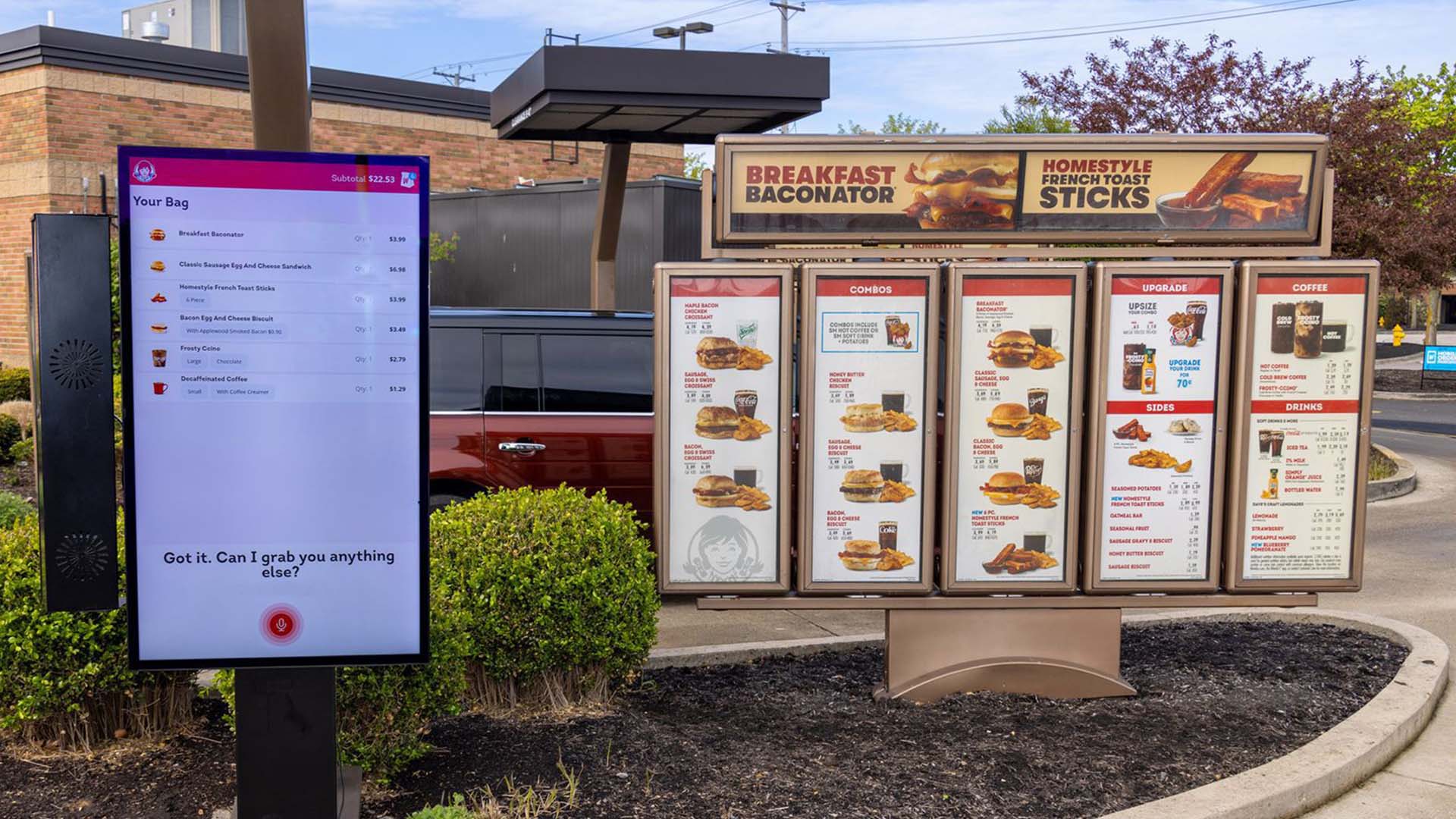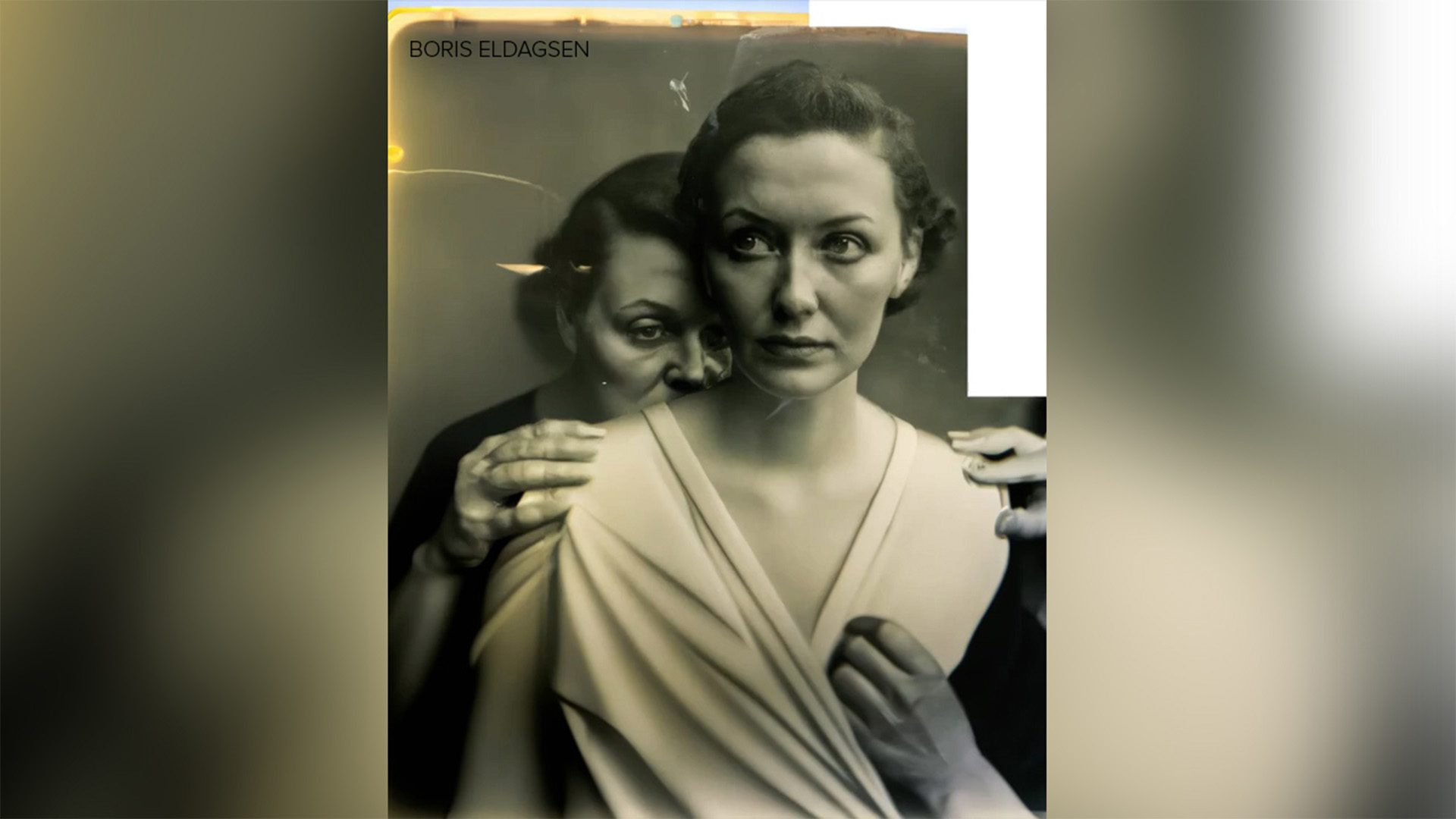Digital artists are utilizing AI-powered technology to create nostalgic art that is stylized to appear old-fashioned. One example of this is Seth Price, whose new body of work mixes AI-generated images, industrial printing processes, and detailed trompe l’oeil painting.
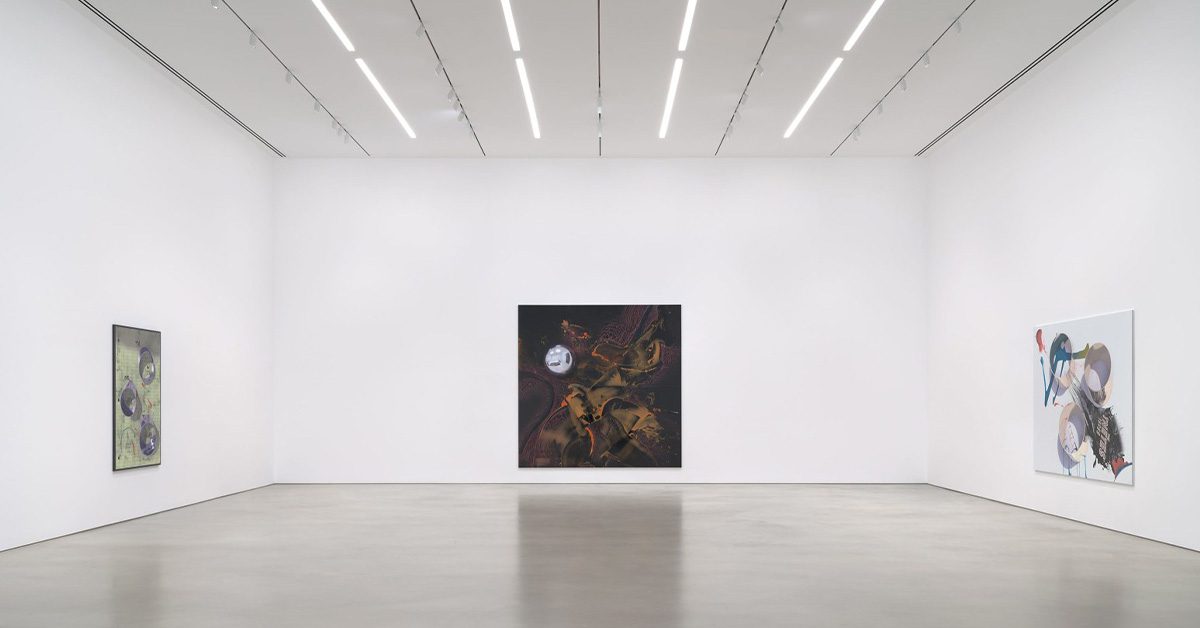
“Thought Comes From the Body II” (2022-23) by Seth Price involves acrylic painting which includes a trompe l’oeil mirror generated using 3-D modeling software. This technique is meant to emulate Jan van Eyck, a Flemish painter from the 15th century who achieved a similar effect by hand. The medium of oil paint allowed the artist to convey depth in his double portrait of the Arnolfini, including a convex mirror on the back wall which contains a self-portrait of the painter.
Multimedia artist and writer, Seth Price, took inspiration from this painting in the creation of his new piece “Thought Comes from the Body II” which includes an illusionistic mirrored sphere in the upper left corner. There are two figures in the reflection, one of which may be Price himself leaning over a painting on a studio floor. Whereas Van Eyck created this illusion by hand, Price was able to create it using an app.
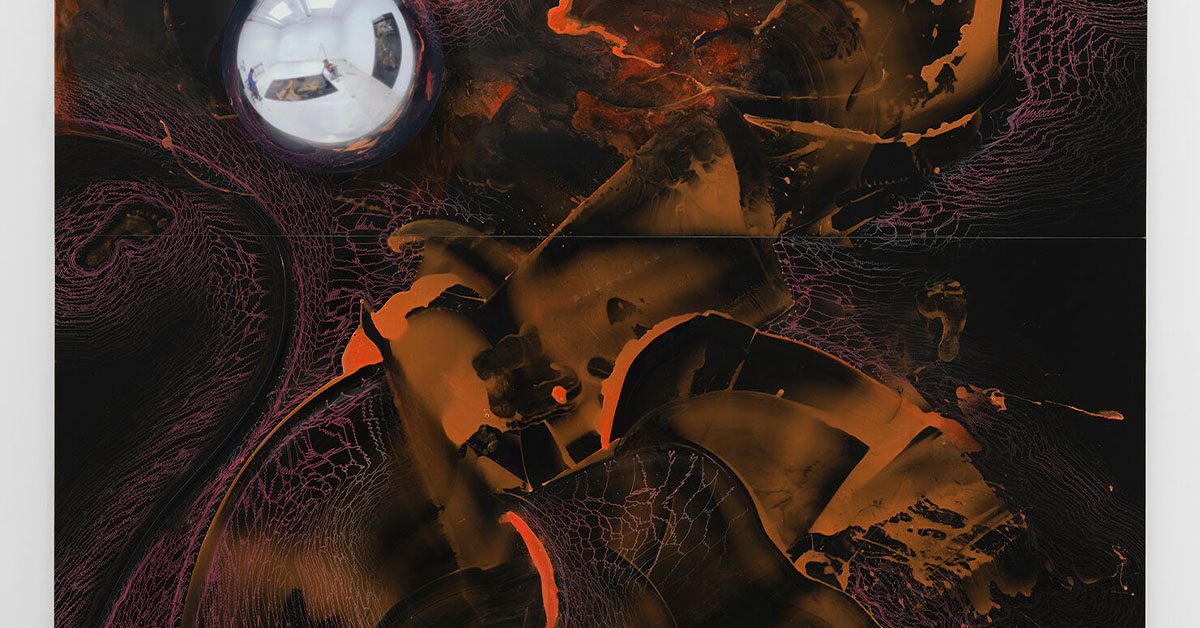
Since 2020, Price’s paintings have combined abstract dashes and pours with jots of text, ominous portraits, backgrounds resembling sketchbook pages, and trompe l’oeil chrome tubes and mirrors. To render the reflected images, Price photographs a painting, adds shiny objects in using 3-D modeling software, and then matches the shapes to the physical panel with an industrial printer.
Five of the eleven paintings in the new collection incorporate AI-generated imagery, buried in the abstract smears and spills. There are a few indicators that the creations are machine-generated, however, including the anatomy and physics in Price’s “Weken Style” as well as the square composition, which is a format favorited by generative AI model DALL-E. Price created the pictures using AI, printed them on “wet” plastic, and then smeared the ink with his fingers which added a human touch.
Price isn’t the only artist utilizing AI technology to create nostalgic-looking images. Just this March, Boris Eldagsen’s AI-generated image won in the Sony World Photography Awards in the Open Competition. The image is created to appear old-fashioned, and even contains a glow in the upper left corner as though emulating a light leak on film.
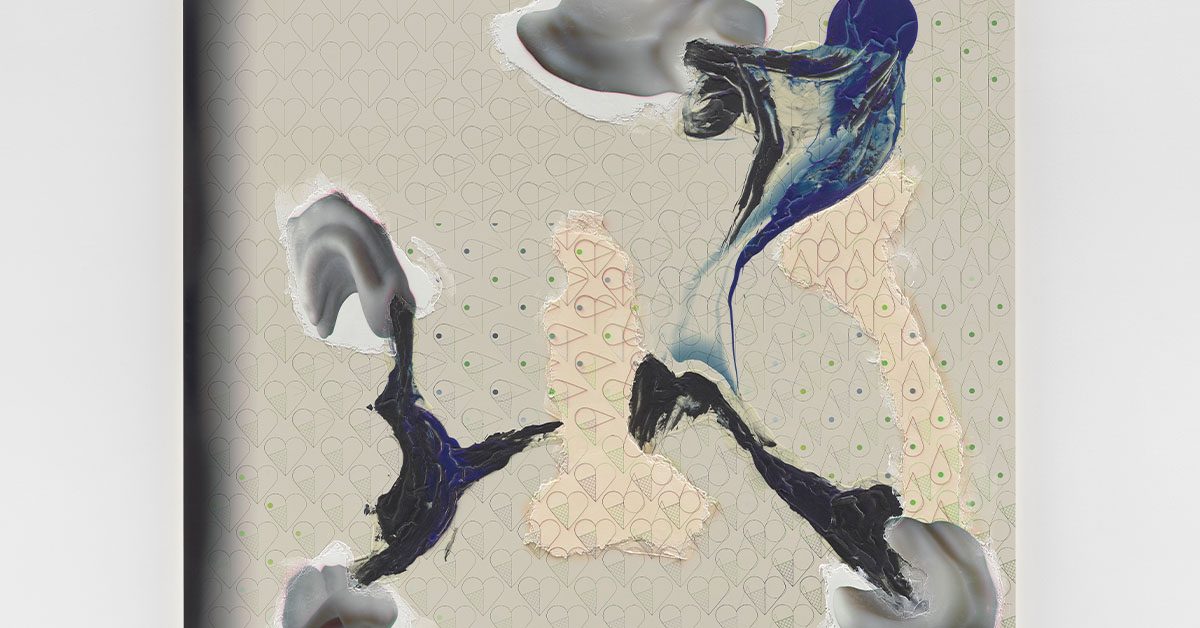
Similarly, a show by Bennet Miller, director of movies such as “Capote” and “Moneyball”, took place in March at the Gagosian’s Upper East Side outpost. Photographs featured in this show were the product of DALL-E, but have the appearance of old photographs with a square sepia-toned appearance. The images portrayed Indigenous American chiefs, Hollywood “braves” tumbling from cliffs, and Victorian children. There are a few trademark AI flaws, however, such as a photo of a tiny white flower on a fingertip which is speckled as though printed on a dusty negative.
Analog photographers such as Herbert Ascherman and Shane Balkowitsch note that anthropology-style photography generated with prompts such as “tintype of lost New Mexico tribe circa 1800s” may run the risk of polluting real historical records.



